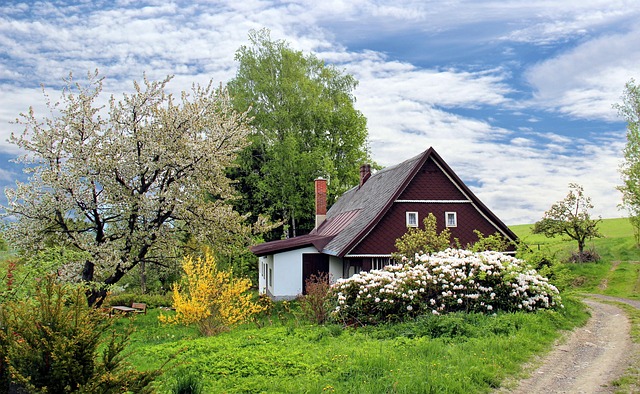Home insurance—it’s one of those things people often don’t think about until disaster strikes. But do Americans insure their homes as a rule, or is it something people gamble on? While homeowners insurance is common, not everyone carries a policy, and the reasons behind that decision are fascinating! From financial constraints to regional risks, there are several factors at play.
In this article, we’ll explore:
- How many Americans actually insure their homes
- Why some homeowners opt out
- What influences insurance rates
- The role of climate change in home insurance policies
- Whether renters are protecting their belongings
So, let’s dive into the world of home insurance in the U.S.!
The Reality: How Many Americans Have Home Insurance?
The vast majority of American homeowners carry insurance, but not all. According to recent data, about 85-90% of homeowners have insurance, largely because mortgage lenders require it. However, that still leaves a surprising number of homeowners without coverage.
# Why Do Some Homeowners Go Without Insurance?
So, if most homeowners have insurance, what about the ones who don’t? A few key reasons include:
- No Mortgage, No Requirement – Once a home is paid off, there’s no legal requirement to carry insurance.
- High Costs – Rising premiums make home insurance unaffordable for some homeowners.
- Risk Perception – Some people feel safe from disasters and believe they won’t need coverage.
- Misunderstanding the Consequences – Some don’t realize how costly it can be to rebuild after a disaster.
A shocking reality? Many uninsured homeowners only realize their mistake when it’s too late!
What Affects Home Insurance Rates?
The cost of home insurance varies widely across the U.S. Some of the biggest factors include:
1. Location, Location, Location
Your ZIP code plays a huge role in your premium. If you live in an area prone to wildfires, hurricanes, or tornadoes, expect to pay more. For example:
- Florida homeowners face higher rates due to hurricanes.
- California residents deal with wildfire-related premiums.
- Tornado Alley states like Oklahoma and Texas see higher costs.
2. Home Value & Replacement Costs
A mansion in Beverly Hills costs more to insure than a small home in Kansas. Why? The bigger the home, the more expensive it is to rebuild.
3. Crime Rates
If you live in a high-crime area, expect higher rates. Insurance companies factor in the likelihood of theft and vandalism.
4. Credit Score Matters
Believe it or not, your credit score affects your home insurance rate! A lower score can mean higher premiums.
5. Claims History
Filed a lot of claims? Insurance companies might consider you a high risk and hike up your rates.
The Impact of Climate Change on Home Insurance
Climate change isn’t just a buzzword—it’s dramatically impacting home insurance policies across the country. With more frequent hurricanes, wildfires, and flooding, insurers are adjusting their rates, or worse, refusing to cover certain areas altogether.
Some companies are even pulling out of high-risk states, leaving homeowners scrambling for alternatives. This is particularly common in places like California, Florida, and Louisiana, where insurers see increasing losses due to natural disasters.
How Are Homeowners Coping?
- Switching to state-backed insurance plans
- Strengthening homes against disasters to qualify for lower rates
- Raising deductibles to keep premiums affordable
- Opting for partial coverage instead of full replacement value
Do Renters Insure Their Homes?
While homeowners generally have insurance, renters are a different story. Surprisingly, only about 55% of renters carry renters insurance, despite it being significantly cheaper than homeowners insurance.
Why Do Renters Skip Insurance?
- They Think Their Landlord Covers It – Landlords insure the building, not tenants’ belongings.
- Cost Concerns – Even though it’s affordable (often under $20/month), some renters don’t prioritize it.
- Underestimating Risk – Many renters assume theft or damage won’t happen to them.
FAQs About Home Insurance in America
1. Is Home Insurance Required by Law?
No, but mortgage lenders require it. If you own your home outright, you don’t have to carry insurance—but it’s risky not to!
2. What’s the Average Cost of Home Insurance in the U.S.?
It varies by state, but the national average is around $1,500 per year.
3. What’s Usually Covered in a Home Insurance Policy?
Most policies cover:
- Dwelling Protection – Pays for damages to the home itself.
- Personal Property – Covers belongings like furniture and electronics.
- Liability Coverage – Protects you if someone gets injured on your property.
- Additional Living Expenses (ALE) – Pays for temporary housing if your home becomes uninhabitable.
4. Can You Be Denied Home Insurance?
Yes! Insurers can deny coverage based on:
- High-risk locations
- Too many past claims
- Poor home condition
- Bad credit score
Conclusion: Should Americans Insure Their Homes?
So, do Americans insure their homes? The short answer is—most do, but not all. With mortgage requirements and rising risks, homeowners tend to carry insurance, though some opt out due to cost or lack of perceived need. Meanwhile, renters remain underinsured despite the affordability of renters insurance.
